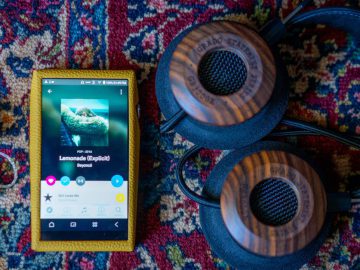As the summer months approach, Valley residents brace not only for the soaring temperatures but for the usual hike in energy bill prices that typically comes with the season.
Most Valley residents agree that air conditioning in the hottest large city is nothing less than a necessity. Still, they also tend to agree there needs to be a balance between comfort and cost, a recent Arizona Republic poll suggests.
Luckily, you can use practical and effective strategies to reduce these expenses while not necessarily compromising comfort. From optimizing air conditioner use to harnessing natural ventilation, small adjustments can make a significant difference.
Here’s your ultimate guide on saving energy, with tips from local experts and energy providers to help residents stay cool while keeping their wallets healthy as the peak of summer approaches.
10 tips to save money on your energy bill
- Plan your AC use.
- Install a smart thermostat.
- Ventilate and use fans.
- Block out sunlight.
- Design your home for efficiency.
- Use renewable energy.
- Consider how you use home appliances.
- Use cooling bedding.
- Ensure AC efficiency.
- Try an DIY energy-saving project.
Arizona experts agree using your AC strategically can help you save the most on your energy bill.
Salt River Project spokesperson Casaundra Donahoe said almost 50% of your energy bill during the summer comes from AC use. Donahoe said one effective strategy residents can follow is setting their AC a few degrees higher before leaving home.
“We recommend while you’re home, keeping it at at least 78 degrees to save money and energy. And then when you leave, every degree you can set it above 80 degrees will help to save you about 2-3% on your bills,” she said.
Katie Conner with Arizona Public Service also suggests setting your AC at a higher temperature during peak hours.
“Pre-cool your home during off-peak hours and stay comfortable while saving money if you are on a (time of use) plan,” Conner said.
Your price peak hours vary depending on the plan you are using.
Investing in a smart thermostat can make planning your AC use easier, as it helps set your AC on a schedule and control the temperature from your phone even when you’re not at home.
Tom Hines, a customer advisor with APS, said the company encourages customers to install smart thermostats. It offers a $30 rebate for purchasing a qualifying thermostat on APS Marketplace or at another retailer and then applying for the credit through APS. Customers can get an additional $85 rebate by enrolling in APS’s Cool Rewards program.
“It saves you a ton of money cooling your home when you’re not there,” Hines said. “If you’re on vacation or you’re away from home, you can automatically adjust your temperature, setting it up a little bit.”
SRP customers can access rebates on a new smart thermostat on marketplace.srpnet.com and get up to $100 off their SRP bill when they join SRP’s Bring Your Own Thermostat Program. By participating in the program, customer’s thermostats will automatically adjust a few degrees higher during periods of high power demand.
“We have over $1,100 in rebates available, depending on the type of unit you install,” Donahoe said. “We have lots of great deals and rebates on smart thermostats.”
People who already own a smart thermostat and enroll in SRP’s thermostat program can receive a $50 SRP bill credit per eligible thermostat when they enroll and a $25 credit each year they remain enrolled in the program.
If it ever gets cold enough in the evenings or early mornings, you can try opening your windows and strategically placing fans to allow fresh air to circulate through the room.
According to Hines, fans can promote airflow and enhance the cooling effect.
“(Fans) circulating air creates a little bit of a breeze, and that breeze over your skin is going to make you feel 2 to 3 degrees cooler,” he said. “So you could actually turn the thermostat up a little bit, save 2-3% for every degree, and use ceiling fans and other fans in your house so that you feel the same temperature”
According to Brandon Young with Payless Power, a Texas retail energy provider, ceiling fans and portable fans produce just 1% of the energy that an AC unit does.
“If you leave your fan on all day, it uses the same energy as if you had your AC on for just 15 minutes,” Young said.
Young and Donahoe suggested ensuring your ceiling fans run counterclockwise to create a cooling breeze.
When you leave the room or leave home, experts recommend turning your fans off because they cannot cool a room.
Do you agree?Most Arizonans set their AC thermostat to this temperature, new poll shows
Both Donahoe and Hines said one of the biggest reasons homes in Arizona can heat up so much during the summer is through windows, which experts call solar heat gain.
Young described heat gain as a greenhouse effect that occurs when sunlight comes through a window, making your room much hotter.
Some strategies that can help you reduce heat gain during the day include closing your curtains, blinds or shades, investing in reflective window film, or even planting trees in front of your windows to block out sunlight,
“Any time you have an opportunity to, put on window coverings, whether it be blackout shades or we recommend adding shade screens to those windows,” Donahoe said. “Whether you do it yourself or you work with a contractor, it’s a really great way to save about 25% on your energy bill and prevent that heat from entering your home.”
SRP offers two free desert-friendly trees to customers who attend a free webinar hosted by Trees Matter. To learn more about the program and shade trees available, customers can visit srpnet.com/energy-savings-rebates/home/shade-tree-workshop
A pro tip from Donahoe to avoid heat gain is to weatherize your windows and doors every year.
“You’d be surprised how much heat seeps in from those cracks around your windows and doors,” she said. “Making sure those are caulked properly can really help keep the cool air in and the hot air out.”
Both APS and SRP offer programs and deals for home insulation work.
Energy Saver, a consumer resource created by the U.S. Department of Energy for saving energy lists multiple methods to create an energy-efficient design at home in its 2022 Energy Saver Guide. Here’s a rundown of the ones best suited to keep your home cool in Arizona’s hotter weather.
- Landscaping: Energy Saver suggests planting deciduous trees with high, spreading crowns on the south side of your home to shade your roof in the summer and allow warmth from the sun to reach your home in the winter. Shrubs and groundcover plants can also contribute as they can shade the ground and pavement around the home, cooling the air before it reaches your walls and windows.
- Windows: Choose medium-colored curtains with white plastic backings to reduce heat gain. During summer days, Energy Saver suggests closing curtains or bñlinds on windows receiving direct sunlight to prevent heat gain. Installing awnings on south- and west-facing windows can also help create shade.
- Cool Roofs: A cool roof reflects sunlight and efficiently emits heat. Standard roofs can reach 150 degrees or more in the summer sun. By installing a cool roof, you can lower the temperature of your roof by up to 50 degrees and save energy and money by using less air conditioning, according to Energy Saver. If you are building a new home, you can decide during planning whether you want a cool roof. If you want to convert an existing roof, you could either retrofit the roof with specialized heat-reflective material, recover the roof with a new waterproofing surface like tile coating or replace the old roof with a new cool roof.
More:This is the hottest time of day in metro Phoenix: Here’s what to know about summer temps
There are ways to purchase renewable electricity from your utility or produce it at your home or in your community, according to Energy Saver.
- Buying renewable electricity: Both SRP and APS offer ways for customers to use electricity from renewable sources.
- Installing a small solar electric system: Generating your own electricity with a solar power system can be a good way to save energy and especially makes sense if you use additional electricity, like if you drive a plug-in hybrid or all-electric vehicle. Yet, it is suggested that you consider several factors before installing a solar power system, including the siting and sizing of the system, the electrical safety and the solar resources available where you live — although the latter should not be a problem in metro Phoenix.
- Community solar: Almost half of households in the U.S. cannot install solar systems due to renting or unsuitable sites. For those unable or unwilling to install solar panels at home, community or shared solar programs may be a good alternative. These programs are often sponsored by utilities, nonprofits or special purpose entities formed by individuals, dividing the costs of solar energy installation among participants. This allows individuals to buy into the system at a level that suits their needs and budget.
- Install a small wind electric system: If you live on at least one acre of land with an ample wind resource, you can generate your own electricity using a small wind electric system. According to Energy Saver, small wind systems can vary in size and consist of a wind turbine, tower, wiring, and balance of system components. Before installing a small wind system, you may want to assess how much wind is available where you live, research potential legal or environmental obstacles, and determine whether a small wind system makes financial sense for you. You can see Energy Saver’s Small Wind Guidebook for more information.
Minimizing the use of home appliances, especially during your plan’s price peak hours, can help you both save energy and keep your home cool.
Using energy-consuming home appliances during peak hours — which depending on your price plan are typically in the mid to late afternoon when the day hits peak temperatures — can significantly increase your energy bill.
“Definitely during peak hours … we recommend avoiding using your oven, your dishwasher, doing your laundry,” Donahoe said. “Save those for later hours.”
Moreover, some appliances can significantly contribute to heating your home. Heat-generating appliances such as ovens, stoves, clothes dryers and blow dryers can make it much harder for your AC to cool down your home, forcing it to run longer or more often.
if you’re shopping for new appliances, you can opt for energy-efficient options by looking for the Energy Star label, which identifies products that meet strict, specific requirements for energy efficiency. You can visit energystar.gov for the full list of certified appliances.
“We do recommend avoiding turning on the oven, even turning on your blow dryer during that time, because that blow dryer definitely contributes to the heat in your home as well,” Donahoe said. “So if you can save those activities for after the sun goes down … that would be ideal.”
Young recommends choosing lightweight and breathable bedding materials like cotton or bamboo to help regulate your body temperature while sleeping.
Using a cooling mattress pad or topper can also help dissipate body heat and promote a comfortable sleep.
“If you only have to cool your body rather than the whole room, it’s much more energy efficient,” Young said.
More:22 things you need to help you stay cool during an Arizona summer
If you’ve had your AC for a long time, you might notice over time it may not work as well as it once did. This can mean it has to work harder to keep your room cool, resulting in higher electricity costs.
To make sure your air conditioner is running more efficiently, you can follow these tips:
- Keep your vents clean by checking them regularly.
- Change your air filter at least every three months.
- Make sure the area around the outside unit is clean and unblocked.
- Clean out the drain.
- Clean off the coils.
- Have your unit checked by a professional at least twice a year.
If after doing these your AC still does not cool your home to your desired temperature or makes weird noises, you may need a new AC unit. A professional can help you determine whether you need an AC replacement.
These are low-cost, high-impact projects that you can do by yourself at home to save energy and money. You can do these quick fixes by following the step-by-step instructions from SRP and Energy Saver that will be linked.








